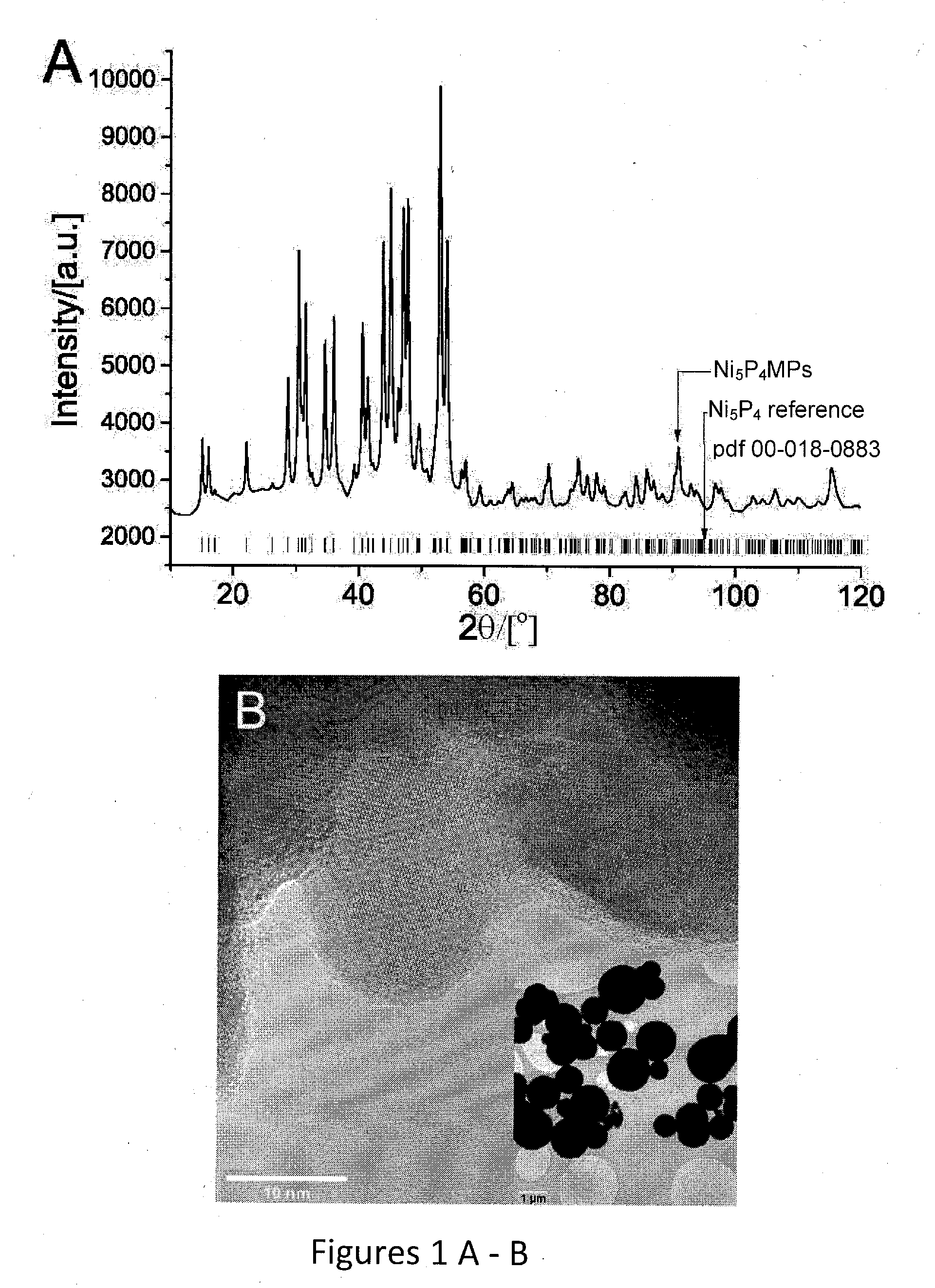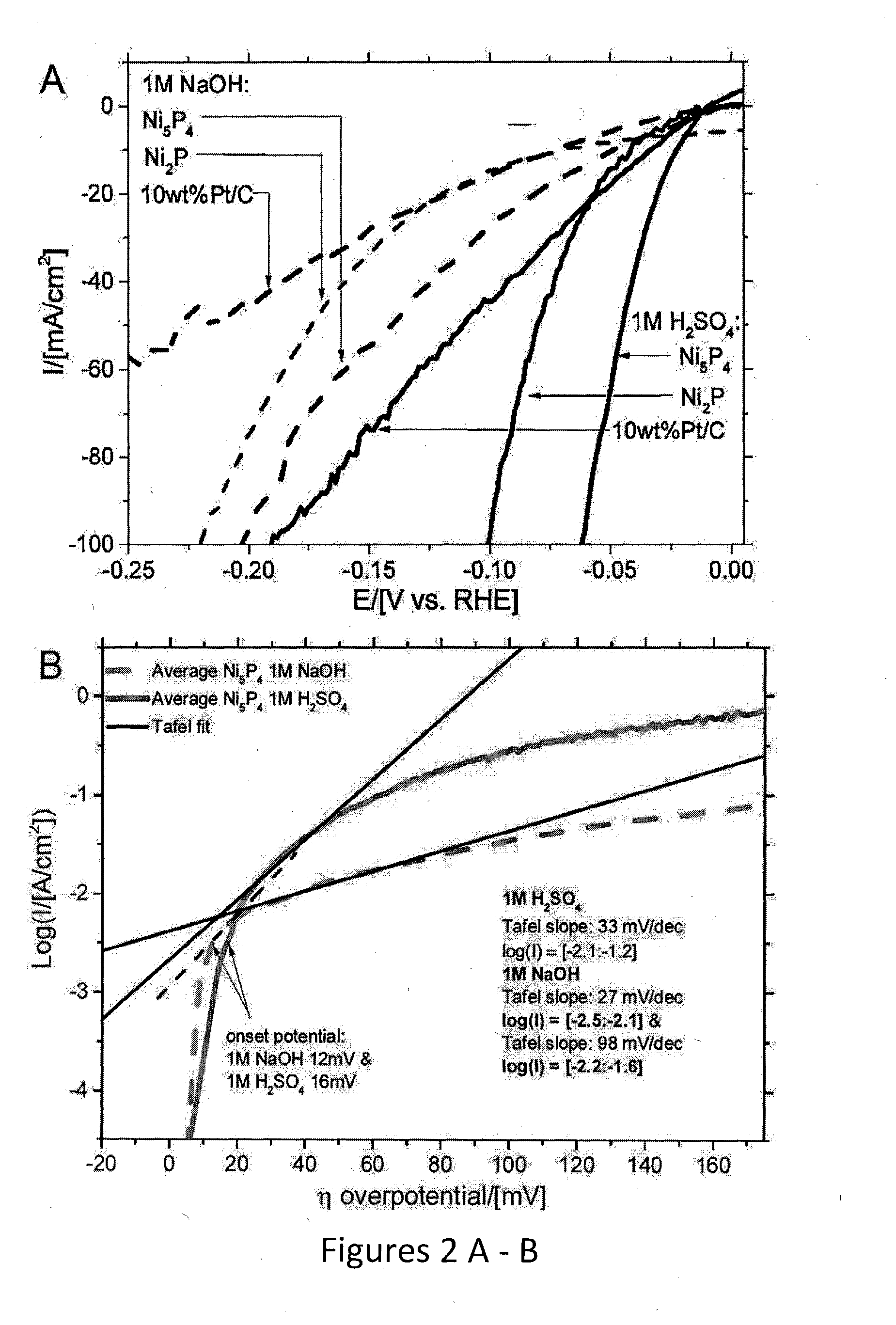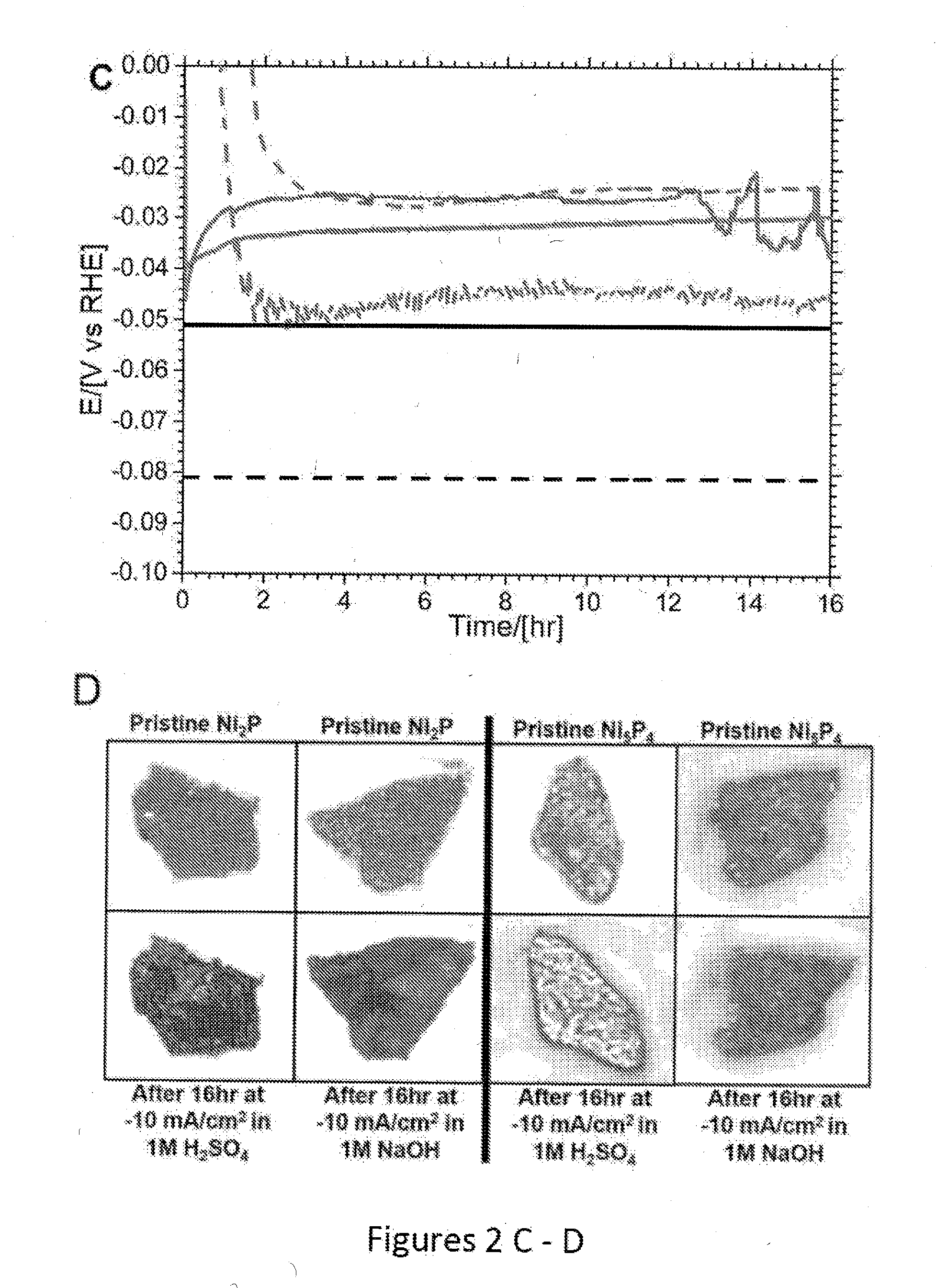Nickel phosphides electrocatalysts for hydrogen evolution and oxidation reactions
a technology of phosphides and electrocatalysts, which is applied in the direction of electrolyte coatings, cell components, physical/chemical process catalysts, etc., can solve the problems of high capital costs, high electrical losses, and industrial electroly
- Summary
- Abstract
- Description
- Claims
- Application Information
AI Technical Summary
Benefits of technology
Problems solved by technology
Method used
Image
Examples
example 1
Synthesis of Ni5P4 Nanoparticles
[0048]Using a solvothermal synthesis route adapted from K. Aso et al. (Inorganic Chemistry, 2011, 50, 10820-10824) Ni5P4 was synthesized as phase pure nanocrystals (Ni5P4 NPs). About 0.385 g Ni(acetylacetonate, acac)2.xH2O (Sigma-Aldrich) was placed in a 3-necked flask together with about 2.5 g tri-n-octylphosphine oxide. TOPO (Strem Chemicals). The flask was connected to a condenser in one port, a Schlenk line in the other, and corked in the third. The condenser was connected to a silicone oil bubbler venting into a fumehood.
[0049]The flask was degassed under vacuum and then refilled with high purity Ar (Air-liquid). A flow of Ar was established through the flask before adding 10 ml of tri-n-octylphosphine, TOP (Strem Chemicals) wider an Ar blanket. The solution was left under Ar flow for approximately 20 minutes to remove any oxygen. The Ar flow was adjusted to a slow rate 1 bubble per second and the flask was then placed on a pre-heated sand bath a...
example 2
Synthesis of Ni2P Nanoparticles
[0051]Ni2P NPs were synthesized by the procedure published by Muthuswamy et al. (ACS Nano, 2011, 5, 2402-2411). About 1.03 g Ni(acac)2.xH2O was placed in a 3-neck flask together with 10 ml n-octylether and 4.6 g oleylamine. The flask was connected to a condenser and Schlenck line as for the procedure for Ni5P4 nanoparticles described above. The flask was evacuated until bubbling subsided (about 10-15 min), and then a flow of Ar was established and 10.2 ml TOP was added under an Ar blancket. The flask was then evacuated anew and heated lightly by placing it 1 cm above a sand bath preheated to 230° C. The reagents dissolved under bubbling (water removal) and formed a deep green clear solution (approximately 30-60 min). Once all of the Ni(acac)2 had dissolved and bubbling had subsided, the flask was filled with Ar and a slow Ar flow was established. The flask was placed in the preheated sand bath for 1 hour (at 230° C.) during which a dark brown solution ...
example 3
Electrode Preparation of Ni5P4, Ni,P, and Pt
[0053]Due to the tendency of Ni5P4 to convert into Ni2P upon heating above 350° C., the procedure used by Popczun et al. (Journal of the American Chemical Society, 2005, 127, 14871-14878) for thick coatings of Ni2 P nanoparticles could not be applied here; instead 50 mg of each catalyst was pressed into a pellet and bonded to a titanium film electrode via silver paint and sealed in non-conducting epoxy. 50 mg of catalyst was pressed in a 6 mm die allowing the pressure to equilibrate, at 2 tons for 10-15 min then increasing the pressure up to the final 4.5 ton. This pressure was held for 16 hours. After removing from the die the pellet was quartered and each piece attached to 6 mm Ti-foil with Ag-paint (SPI supplies). After drying, the Ti-foil -pellet was attached to a Cu-wire (curled into a spiral in one end) with Ag-paint. When the Ag-paint had cured (overnight at room temperature or 10 min at 120° C)., The Cu-wire was threaded through a ...
PUM
| Property | Measurement | Unit |
|---|---|---|
| grain sizes | aaaaa | aaaaa |
| grain sizes | aaaaa | aaaaa |
| turnover frequency | aaaaa | aaaaa |
Abstract
Description
Claims
Application Information
 Login to View More
Login to View More - R&D
- Intellectual Property
- Life Sciences
- Materials
- Tech Scout
- Unparalleled Data Quality
- Higher Quality Content
- 60% Fewer Hallucinations
Browse by: Latest US Patents, China's latest patents, Technical Efficacy Thesaurus, Application Domain, Technology Topic, Popular Technical Reports.
© 2025 PatSnap. All rights reserved.Legal|Privacy policy|Modern Slavery Act Transparency Statement|Sitemap|About US| Contact US: help@patsnap.com



